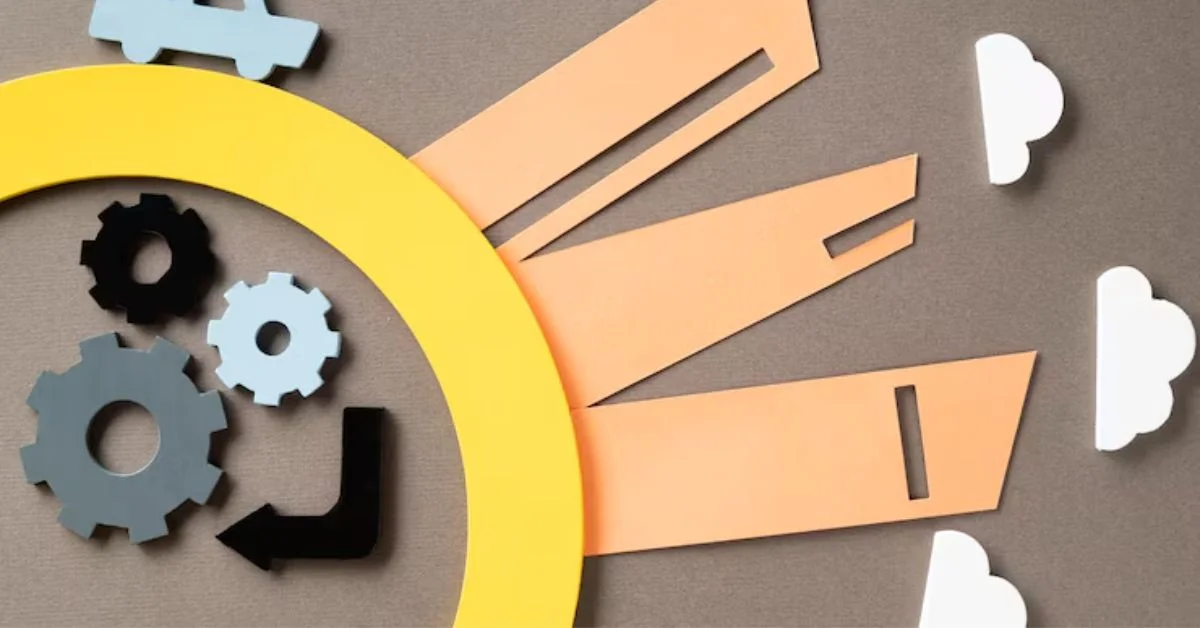If you’re trying to understand what “blow-up ratio” means in a manufacturing or engineering context, especially within plastic film extrusion, this article is for you. The blow-up ratio is a critical parameter that determines the physical and mechanical properties of blown films. It directly affects film thickness, width, strength, and clarity—making it an essential concept in polymer processing and industrial design.
While it may sound like a mathematical term, the blow-up ratio (BUR) is foundational in plastics manufacturing, particularly in blown film extrusion. This article will cover the term from multiple dimensions—what it is, how it is calculated, its effect on quality, design choices, material behavior, and modern advances that are changing how manufacturers optimize this variable.
What Is Blow-Up Ratio?
Blow-up ratio refers to the ratio of the diameter of the blown film bubble to the diameter of the die used in film extrusion. It’s a measure of how much the molten plastic is stretched or expanded as it exits the die.
In formal terms:
Blow-Up Ratio (BUR) = Diameter of Blown Film Bubble / Die Diameter
This ratio impacts the mechanical orientation of the polymer molecules, which affects the final properties of the film—such as tensile strength, clarity, gauge control, and shrinkage.
READ MORE: GLAADVoice.com: An In-Depth Look at Its Mission, Impact, and Cultural Significance
Why Is Blow-Up Ratio Important?
The BUR is not just a production setting—it is a design tool that engineers use to control the performance characteristics of plastic film.
Key implications of the blow-up ratio:
- Mechanical Strength: Higher BUR increases transverse strength due to molecular orientation.
- Clarity and Transparency: Excessively high BUR can cause haze or uneven film clarity.
- Width and Thickness: A higher ratio yields a wider but thinner film.
- Shrinkability: Films with a higher BUR show increased shrinkage in the transverse direction.
The right BUR is a balance: it should meet product specifications without compromising process stability or increasing material waste.
Understanding the Blown Film Process
To grasp BUR fully, it helps to understand the process where it applies: blown film extrusion.
In this process, molten plastic is extruded through a circular die to form a tube, which is then inflated with air to expand into a bubble. This bubble is cooled and collapsed into a flat film. The degree of inflation determines the BUR.
Table: Key Elements of the Blown Film Process
| Step | Description |
|---|---|
| Extrusion | Molten plastic is pushed through a circular die. |
| Inflation | Air is introduced, inflating the tube into a bubble. |
| Cooling | Air rings or water cool the inflated bubble. |
| Collapsing | The bubble is flattened between rollers. |
| Winding | The film is rolled for storage or conversion. |
The ratio of bubble diameter to die diameter in this process is the blow-up ratio.
Calculating Blow-Up Ratio
Let’s consider an example. Suppose you’re using a die with a diameter of 100 mm, and your blown bubble expands to a diameter of 300 mm.
Then,
BUR = 300 / 100 = 3.0
This means the film has expanded to three times the diameter of the die during production. A BUR of 2.0 to 4.0 is common in commercial settings, depending on the polymer type and film application.
How Blow-Up Ratio Affects Film Properties
Choosing the right BUR isn’t just a technical decision—it influences the final product’s behavior during packaging, sealing, printing, and storage.
Table: Impact of Blow-Up Ratio on Film Properties
| Property | Effect of Higher BUR |
|---|---|
| Tensile Strength (TD) | Increases due to orientation |
| Tensile Strength (MD) | May decrease slightly |
| Thickness Uniformity | Improves with moderate BUR |
| Film Width | Increases with BUR |
| Shrinkage (TD) | Increases significantly |
| Optical Clarity | May decrease with excessive BUR |
| Sealing Performance | Needs adjustment for high BUR films |
Orientation Effects
In film extrusion, molecular orientation defines directional strength. A higher BUR leads to transverse direction (TD) orientation, making the film stronger across its width. A lower BUR favors machine direction (MD) orientation, resulting in stronger longitudinal strength.
Industry Applications
Blow-up ratio is especially crucial in the following sectors:
- Food Packaging: BUR affects oxygen transmission rates and mechanical durability.
- Shrink Wraps: Requires high BUR for optimal shrink characteristics.
- Agricultural Films: Requires balanced properties; a moderate BUR is often ideal.
- Medical Packaging: Needs high clarity and precise thickness control, affected by BUR.
Choosing the right BUR for a specific application involves matching material properties with functional demands.
Challenges in Controlling BUR
Maintaining a consistent BUR during production can be complex due to:
- Die Lip Variations: Uneven die lips affect bubble shape.
- Air Pressure Fluctuations: Changes in internal pressure can alter bubble size.
- Cooling Inconsistencies: Poor cooling leads to sagging or deformation.
- Resin Behavior: Different polymers respond differently to stretch.
Many plants now use automated BUR control systems that monitor diameter and adjust air input dynamically to maintain bubble stability.
Innovations in Blow-Up Ratio Optimization
The future of BUR management lies in predictive automation, digital twin modeling, and AI-based feedback loops.
Smart Manufacturing Tools:
- Laser-based Bubble Sensors: Measure the real-time bubble diameter.
- AI Predictive Models: Analyze incoming resin data to recommend BUR settings.
- Integrated Process Control Units: Sync die temperature, air flow, and haul-off speed to stabilize BUR.
- Digital Twin Simulations: Virtual modeling to predict BUR impact before production.
These innovations are helping manufacturers produce consistent, high-quality films with fewer production defects and less waste.
Blow-Up Ratio and Sustainability
An optimized BUR can also contribute to sustainability goals:
- Material Reduction: Thinner films mean less plastic used per unit.
- Improved Process Efficiency: Less scrap and downtime.
- Enhanced Recyclability: Films with uniform thickness and clarity are easier to recycle.
- Lower Energy Consumption: Controlled BUR reduces the need for rework and extra cooling.
Sustainability and efficiency are no longer trade-offs—intelligent BUR optimization can serve both.
Comparing Blow-Up Ratios Across Materials
Different polymer resins require different BURs for optimal performance.
Table: Recommended Blow-Up Ratios by Material
| Material Type | Typical BUR Range |
|---|---|
| LDPE (Low-Density Polyethylene) | 2.0 – 3.0 |
| HDPE (High-Density Polyethylene) | 3.0 – 4.0 |
| LLDPE (Linear Low-Density Polyethylene) | 2.5 – 3.5 |
| PP (Polypropylene) | 1.5 – 2.5 |
| EVA (Ethylene Vinyl Acetate) | 2.0 – 2.8 |
Choosing the incorrect BUR for a resin can result in film breakage, uneven thickness, or optical distortion.
READ MORE: Sushi Order Topped with Salmon: A Deep Dive Into Flavor, Etiquette, and Evolution
Conclusion
The blow-up ratio, while a seemingly simple metric, governs a vast array of variables in the blown film industry. It intersects with quality, performance, sustainability, and innovation. Whether you’re a plant operator, materials engineer, or packaging designer, understanding and optimizing BUR can dramatically improve the final outcome of your product.
As materials evolve and processes become smarter, the importance of foundational metrics like the blow-up ratio remains. The difference between a successful production run and a costly rework often lies in how well such parameters are understood and controlled.
In a world increasingly driven by precision, consistency, and sustainability, mastering the blow-up ratio is more than just technical—it’s strategic.
Frequently Asked Questions (FAQs)
1. What is the ideal blow-up ratio for packaging films?
The ideal BUR typically falls between 2.0 and 3.5 depending on the polymer and application. Food packaging often uses BURs in this range to ensure both strength and clarity.
2. Does a higher BUR always mean a better film?
Not necessarily. While higher BUR improves transverse strength and width, it may compromise clarity and increase shrinkage. It must be optimized based on the application.
3. Can blow-up ratio be changed during production?
Yes, but doing so requires careful adjustment of air pressure, cooling, and haul-off speed. Sudden changes can destabilize the bubble or cause film defects.
4. How is BUR measured in real-time?
Most modern film extrusion lines use laser or camera systems to monitor the bubble diameter and calculate BUR continuously.
5. Why is blow-up ratio important in shrink films?
High BURs induce transverse orientation, which creates shrink-back force when heat is applied. This makes the film cling tightly during packaging.









